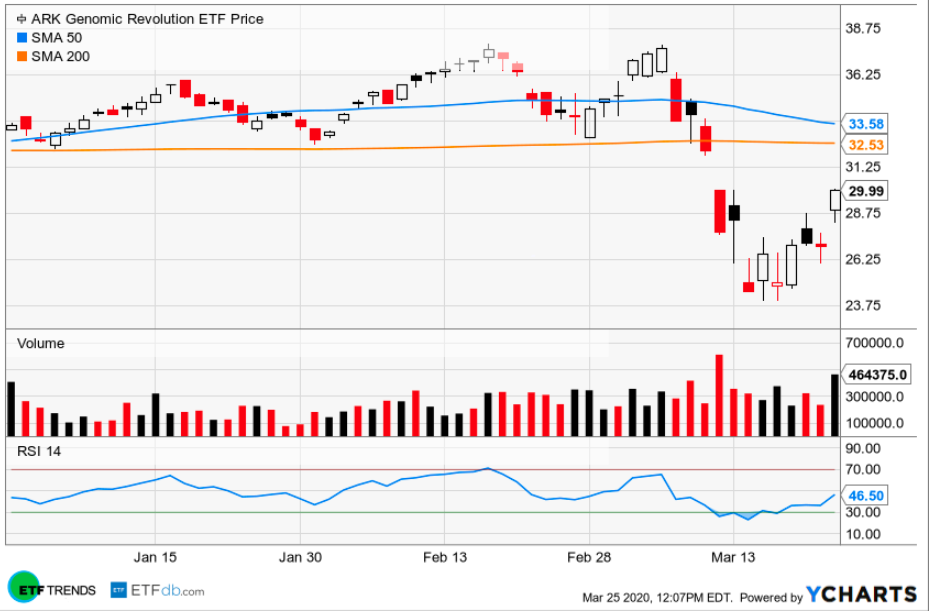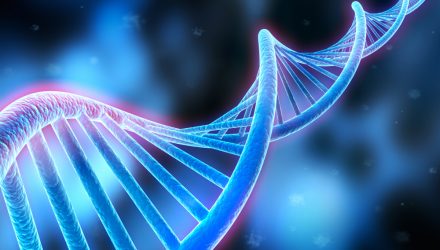Genomics is one of the most disruptive technologies out there, one that is becoming more accessible due to declining costs. However, the research and development that goes into genomics are treated in old school accounting fashion: as a liability, not an asset.
ARK Invest, the asset manager and ETFs issuer behind the ARK Genomic Revolution Multi-Sector Fund (CBOE: ARKG), makes a strong case for genomics research and development assets being treated as, well, assets.
“While diagnostics has evolved into a highly commoditized industry with limited differentiation among test providers, next-generation DNA sequencing (NGS) and machine learning (ML) are creating a different competitive dynamic in the molecular diagnostic (MolDx) space,” said ARK analyst Simon Barnett in a recent note. “NGS-powered diagnostics have complex workflows, especially in upstream sample preparation and downstream bioinformatics. As a result, MolDx providers must invest heavily to overcome inefficiencies and generate sustainable cash flows at scale.”

ARKG includes companies that merge healthcare with technology and capitalize on the revolution in genomic sequencing. These companies try to better understand how biological information is collected, processed and applied by reducing guesswork and enhancing precision; restructuring health care, agriculture, pharmaceuticals and enhancing our quality of life.
Evolving With The Times
Genomics companies try to better understand how biological information is collected, processed and applied by reducing guesswork and enhancing precision; restructuring health care, agriculture, pharmaceuticals and enhancing our quality of life.
Genomics companies spend a plethora of time and massive amounts of money to fund breakthrough biological treatments and diagnostic tools. Blossoming developments can literally change their fortunes, and the fortunes of shareholders overnight. Genomics is likely to be an integral part of the biotechnology growth story in the years ahead.
“Within the MolDx space, ARK considers research and development (R&D) not just an operating expense but also an asset. R&D dollars can result in novel products, patents on intellectual property, and reductions in cost-of-goods-sold (COGS), generating future cash flows,” notes Barnett.
The DNA sequencing market is experiencing significant growth, with estimates expecting the market to grow from $6.2 billion in 2017 to $25.5 billion by 2025 – representing a compound annual growth rate of 19%. As a result of significant technological advances in the field, it’s estimated that anyone with $100 can now sequence their DNA, down from the $100 million it was estimated to cost in 2001.
For more on disruptive technologies, visit our Disruptive Technology Channel.
The opinions and forecasts expressed herein are solely those of Tom Lydon, and may not actually come to pass. Information on this site should not be used or construed as an offer to sell, a solicitation of an offer to buy, or a recommendation for any product.

